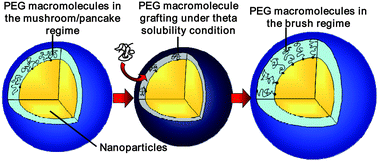Dense PEG layers for efficient immunotargeting of nanoparticles to cancer cells†
Abstract
In order to achieve a high density of grafted PEG chains on functional

* Corresponding authors
a
Ian Wark Research Institute, University of South Australia, Mawson Lakes Campus, Mawson Lakes, Adelaide, Australia
E-mail:
benjamin.thierry@unisa.edu.au
Fax: +61 8 8302 3683
Tel: +61 8 8302 3689
In order to achieve a high density of grafted PEG chains on functional

 Please wait while we load your content...
Something went wrong. Try again?
Please wait while we load your content...
Something went wrong. Try again?
B. Thierry and H. J. Griesser, J. Mater. Chem., 2012, 22, 8810 DOI: 10.1039/C2JM30210A
To request permission to reproduce material from this article, please go to the Copyright Clearance Center request page.
If you are an author contributing to an RSC publication, you do not need to request permission provided correct acknowledgement is given.
If you are the author of this article, you do not need to request permission to reproduce figures and diagrams provided correct acknowledgement is given. If you want to reproduce the whole article in a third-party publication (excluding your thesis/dissertation for which permission is not required) please go to the Copyright Clearance Center request page.
Read more about how to correctly acknowledge RSC content.
 Fetching data from CrossRef.
Fetching data from CrossRef.
This may take some time to load.
Loading related content
